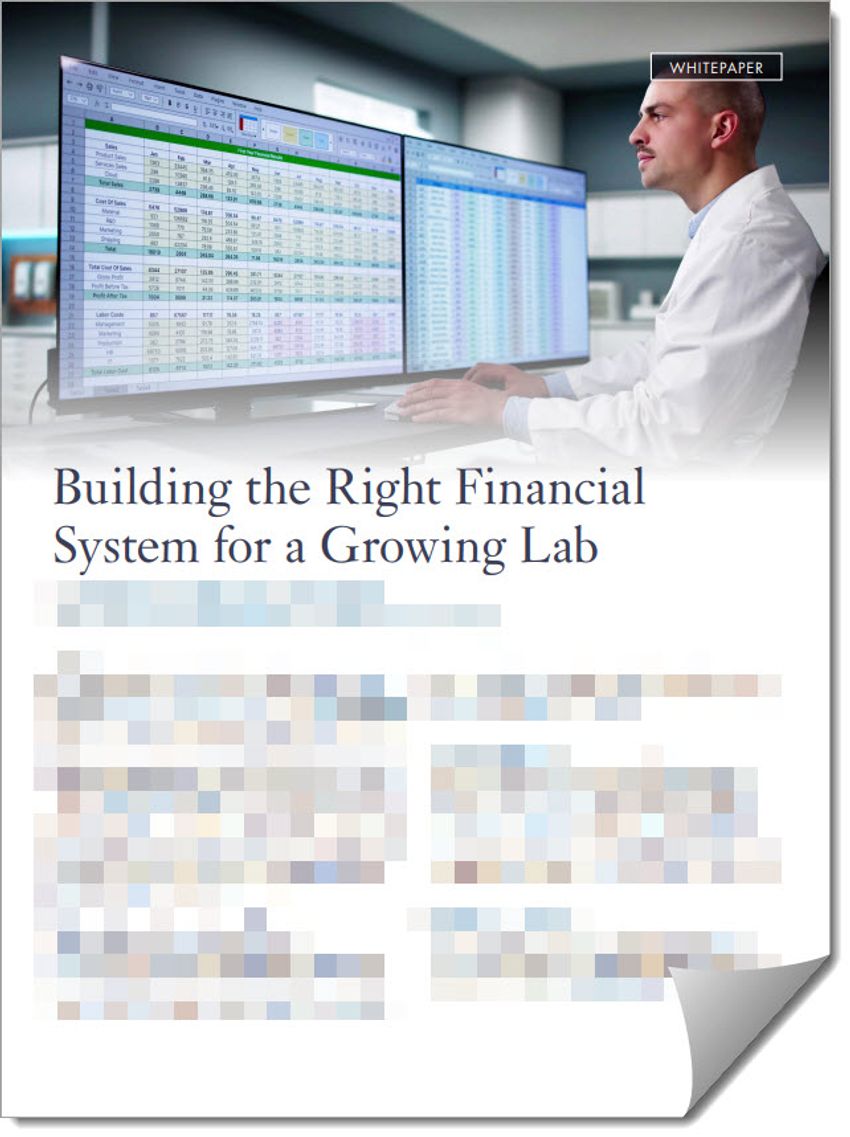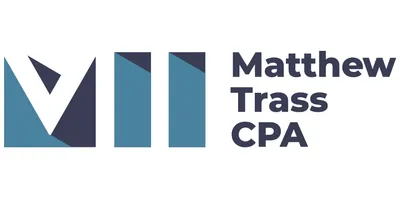Building the Right Financial System for a Growing Lab
Scientific know-how launched your business. This guide shows when the financial side needs upgrading
On July 4, 2025, the U.S. tax code changed again. A new provision restored immediate write-offs for domestic R&D expenses, reversing a rule that had forced labs to spread deductions over five years. Labs with reliable financial systems can use this to reduce current tax burdens or amend past returns. But for those still relying on spreadsheets, that level of detail may be hard to track.
Any number of financial triggers can tip a DIY system into chronic rework. This guide helps you spot those flashpoints, and know when it’s time to reach for help. Whether you’re aiming for your first grant or your first million, it shows how to catch financial risks early and take control before they slow your growth.
What makes lab accounting different
Matt Trass is a CPA with a background in analytical chemistry and deep experience supporting labs across research, diagnostics, and manufacturing. He’s seen the same four pressure points surface again and again as labs move beyond basic accounting. Scientific work creates demands that small-business software isn’t built to handle, and ignoring them leads to trouble.
1.Multiple revenue codes.
Trass flags this as a common early mistake: posting grants, contracts, and product sales into one revenue category. That blurs the line between restricted and unrestricted funds and blocks visibility into margins. It also makes it harder to defend indirect cost rates or meet funder reporting rules, which require labs to track allowable costs by source.
2.Capital-heavy purchases
Some labs record six-figure equipment—mass specs, sequencers, freezers—as supplies instead of capital assets. That error erases the deduction and leaves assets off required schedules. IRS rules under Section 179 treat misclassification as a common audit trigger, especially when costs are incorrectly included in indirect expenses.
3.Labor tied to research rules.
Lab staff may split time across internal research, grant projects, and client work. That division affects both tax strategy and compliance. Without time tracking by source, labs risk missing R&D credits or charging labor to the wrong funder.
4.Compliance layers
Unlike tax strategy, grant compliance has hard rules with clawback potential. Government agencies require labs to separate costs, follow spending timelines, and show exactly how funds were used. Without proper controls, labs risk major penalties. Trass points to a 2024 case where a New York lab director pleaded guilty to misusing an NSF grant and was ordered to repay US$200,000.
Early warning signs
Labs don’t need a full audit to know when their books are under pressure. These signs point to systems that are already falling behind.
• No separation of duties:
When one person handles invoicing, records payments, and reconciles accounts, there’s no check on errors or misuse. Trass identifies this setup as a common risk in small labs when financial roles grow informally over time.
• Undifferentiated payroll tracking:
When staff time isn’t assigned to specific projects or cost categories, it becomes impossible to identify which wages qualify as R&D. The IRS requires payroll records that link compensation directly to research activity. General payroll reports don’t meet that standard. Labs that pool all wages risk leaving credits unclaimed or filing without a defensible basis.
• Month-end close slips later each quarter:
A close that once finished by Day 10 now pushes past Day 20. That drift often points to missing data, uncategorized expenses, or delayed reviews. When filings are inaccurate due to weak internal controls, the IRS may impose a 20 percent accuracy-related penalty under Section 6662.
What growth-ready labs do next
GAAP—Generally Accepted Accounting Principles— becomes the turning point for most labs that outgrow basic tools. It brings structure to how labs record income, track obligations, and report to funders.
At that stage, many labs bring in outside help. Trass works with teams in exactly this situation, supporting them remotely across the U.S. and giving them the accounting structure they need without the overhead of hiring full-time staff.
The scorecard that follows reflects the controls he uses when onboarding new clients. It’s a quick way to check whether your current system can support growth, or if key pieces are missing.
Lab Finance Readiness Worksheet
Check Yes or No for each line. Use “Notes” to list fixes, owners, or deadlines.
Control area Simple check Yes No Notes
Revenue tracking Grants, service contracts, and product sales are recorded in separate income categories.
Capital assets Purchases over US $_____ are in an asset register and depreciated on a set schedule.
Labor by project Timesheets or a time-tracking tool assign hours to the specific grant, client job, or internal R&D project.
Month-end close Financial close finishes within 10 days after month-end, with a checklist the team follows every month.
Compliance files Backup for grants, indirect-cost rates, and R&D credits lives in one shared folder and is updated monthly.
Oversight and deadlines
One named owner signs off on monthly reports and keeps a shared calendar of filing deadlines.
Separation of duties No single person controls invoicing, payment posting, and account reconciliation.
Total
Yes Readiness level What it means
0 – 2 At Risk Core controls missing. Start with revenue categories and an asset register.
3 – 4 Needs Work Data exists, but timing or tracking gaps remain. Tighten time tracking and close process.
5 – 7 Ready to Scale Key controls in place. Consider a lab specialist for audits and tax planning.





